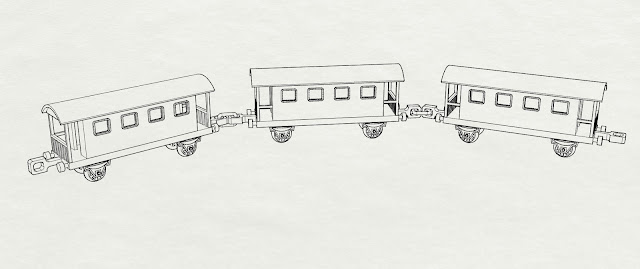Neck-it! (three week
project)
Assignment brief:
Using Rhino, Shapeways and Adobe Creative suite to design and 3D
print a fully articulated necklace or bracelet in one piece. Take advantage of the format
of a necklace or charm bracelet to tell a story/create a narrative in the piece. Your piece must include joints that are printed in place or include a working clasp.
Learning outcomes:
Students will learn advanced
modeling techniques in Rhino, file formatting for outsourcing 3D printing and
be exposed to new materials by designing a wearable using 3D
printing. This process will better inform future design decisions using this
workflow.
Skills list:
Rhino: Array along curve,
History, advanced gumball, orientation, model extents, connection points,
checking models for printability and sudo-parametric modeling, flow along
surface, sweep1 and 2
Shapeways:
uploading, workflow, pricing,
tolerances, printing in multiple materials and breaking points in materials.
3D
printed parts: finishing and dying parts with color
Concept:
Creating a bracelet with
interlocking parts that can create a narrative. Think: repetition, transition, generative
geometry, historical reference and wear-ability. Using 3D printing and CAD
modeling there is an opportunity to make new forms that move beyond a basic
metals skillset. This project will ask the student to explore new territory
that may have been closed off to them through traditional fabrication methods
and focus on taking advantage of the modular to create a narrative.
Research:
Chains, contemporary work,
connection points/links, status symbols, focal points (such as medallions),
clasps, cultural identifiers, fashion.
Create contrast through imagery or create a non-linear narrative by stringing objects out of order.
Expectations:
A fully articulated 3D printed
chain with a clasp, Research in the form of models, photos, chain samples and
tests.
Documentation in the form of
digital renderings or sketches posted to your blog!
You must include research photos/reference documentation on your blog!
Content! Content! Content!
Questions:
Does it need to connect all the way?
What are the advantages of multiples?
What range of motion does it need to have?
How big are the links?
What is the history of the necklace?
The wearing of charms may have begun as a form of amulet or talisman to ward off evil spirits or bad luck.[1]
During the pre-historic period, jewelry charms would be made from shells, animal-bones and clay. Later charms were made out of gems, rocks, and wood.
For instance, there is evidence from Africa that shells were used for adornments around 75,000 years ago. In Germany intricately carved mammoth tusk charms have been found from around 30,000 years ago. In ancient Egypt charms were used for identification and as symbols of faith and luck. Charms also served to identify an individual to the gods in the afterlife.[2]
During the Roman Empire, Christians would use tiny fish charms hidden in their clothing to identify themselves to other Christians. Jewish scholars of the same period would write tiny passages of Jewish law and put them in amulets round their necks to keep the law close to their heart at all times. Medieval knights wore charms for protection in battle. Charms also were worn in the Dark Ages to denote family origin and religious and political convictions.
Charm bracelets have been the subject of several waves of trends. The first charm bracelets were worn by Assyrians, Babylonians, Persians, and Hittites and began appearing from 600 – 400 BC.[3]
For example, Queen Victoria wore charm bracelets that started a fashion among the European noble classes. She was instrumental to the popularity of charm bracelets, as she “loved to wear and give charm bracelets. When her beloved Prince Albert died, she even made “mourning” charms popular; lockets of hair from the deceased, miniature portraits of the deceased, charm bracelets carved in jet.”















No comments:
Post a Comment